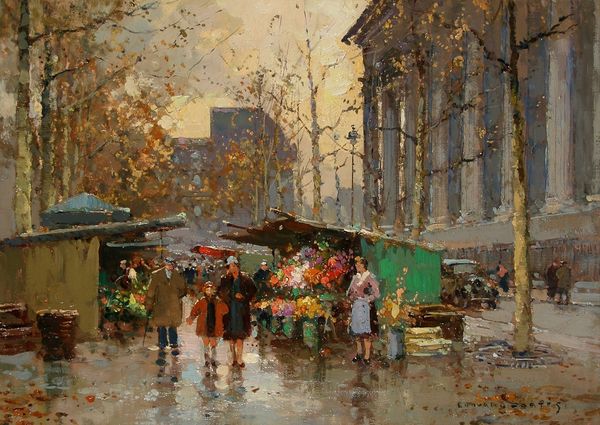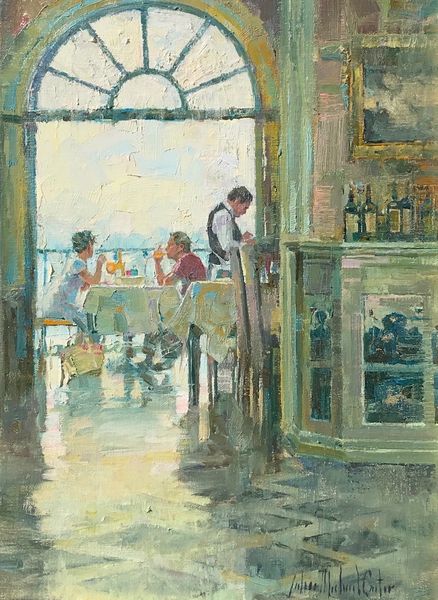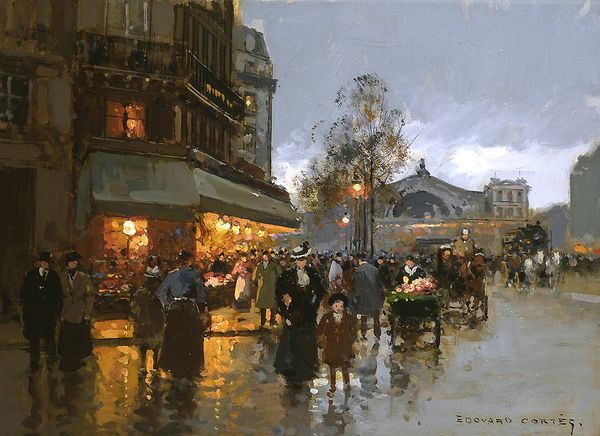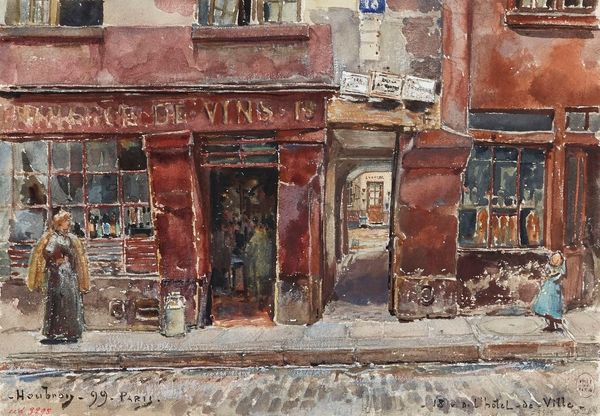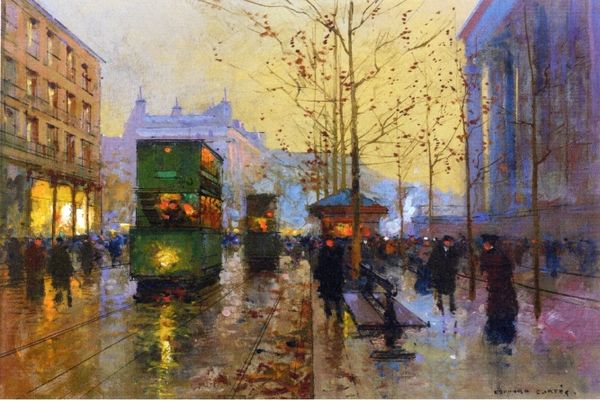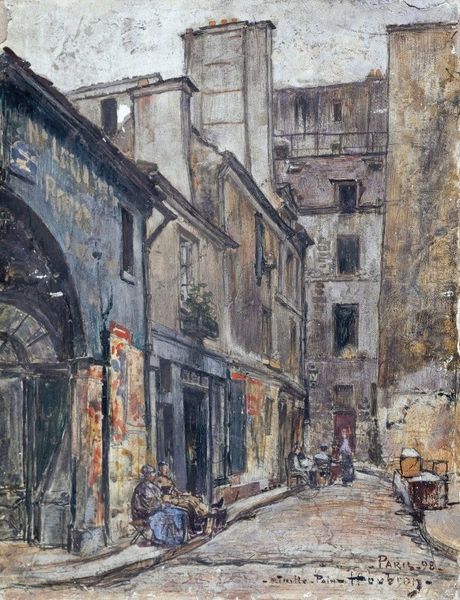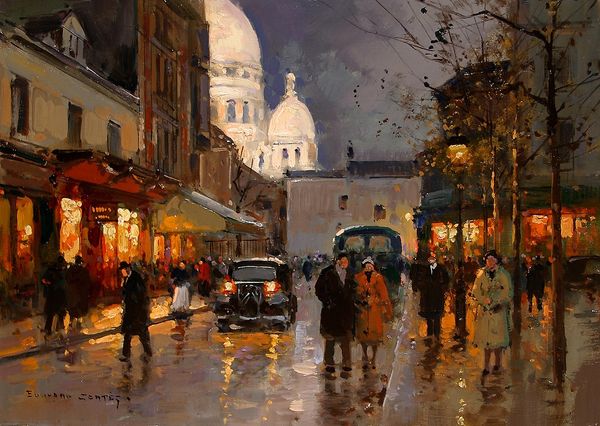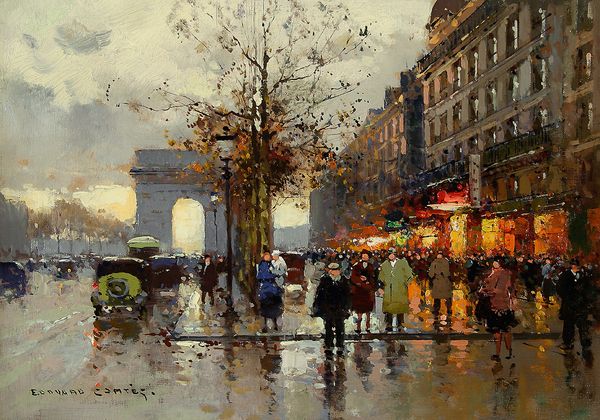
Copyright: Public domain
Curator: Let's discuss "Little Cobbler's Shop," an oil on canvas created by Childe Hassam in 1912. Editor: My immediate impression is of subdued light, muted colors and an overall gloomy day, even melancholic. The brushstrokes though, lend the painting energy. Curator: Note how the application of oil paint emphasizes the environment; see how it renders the textures of the street and building facades, documenting the urban experience of the time. Consider also that buildings like the "Alwyn Auto School" were at the fore of massive shifts in labor models and production! Editor: Absolutely, but observe how Hassam uses color not to imitate reality, but to express feeling. The blues, greens, and grays create a symphony of subtle tones, a network of structural echoes and tonal compensations; this harmony conveys a mood, and ultimately serves aesthetic function. Curator: Yet, it's more than just aesthetic, wouldn't you agree? The small businesses depicted here were the lifeblood of communities, a network sustained by human labor. By portraying this scene, Hassam highlights the realities of everyday life and the urban infrastructure supporting it, not just timeless beauty. What we may perceive today as gloom I read as industrial drudgery. Editor: Perhaps, but don't discount the power of formal elements to evoke emotion. Look at the reflections in the wet pavement; the buildings aren't simply depicted. Rather, Hassam distorts, refracts, and reorganizes visual input to construct a reality with aesthetic import, even if a rather unpleasant or melancholic one. The visible brushstrokes, while contributing to the textural feel you admire, simultaneously highlight the constructedness of the image. Curator: But it is not simply the visible brushstrokes, it is that labor is invisibilized as much as is rendered by those strokes. Do you notice that the only sign of human activity is in the small indistinct silhouettes of the two characters? We never get to see the cobblers in their shops, for instance. It could speak to anxieties of industrial change. Editor: Ultimately, whether one focuses on brushstrokes or human realities, Hassam succeeds in creating a layered narrative and structural organization that continues to resonate today. Curator: Agreed. Hassam's focus on these urban centers helps us connect with our shared economic and cultural past, inviting critical reflections about industrial development and how we represent labor.
Comments
No comments
Be the first to comment and join the conversation on the ultimate creative platform.

